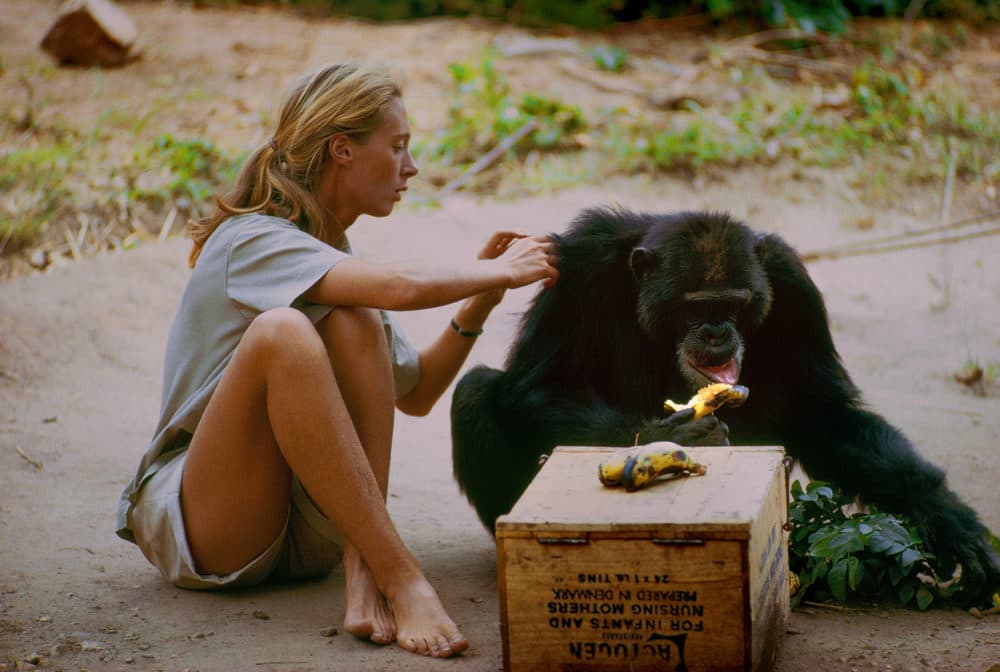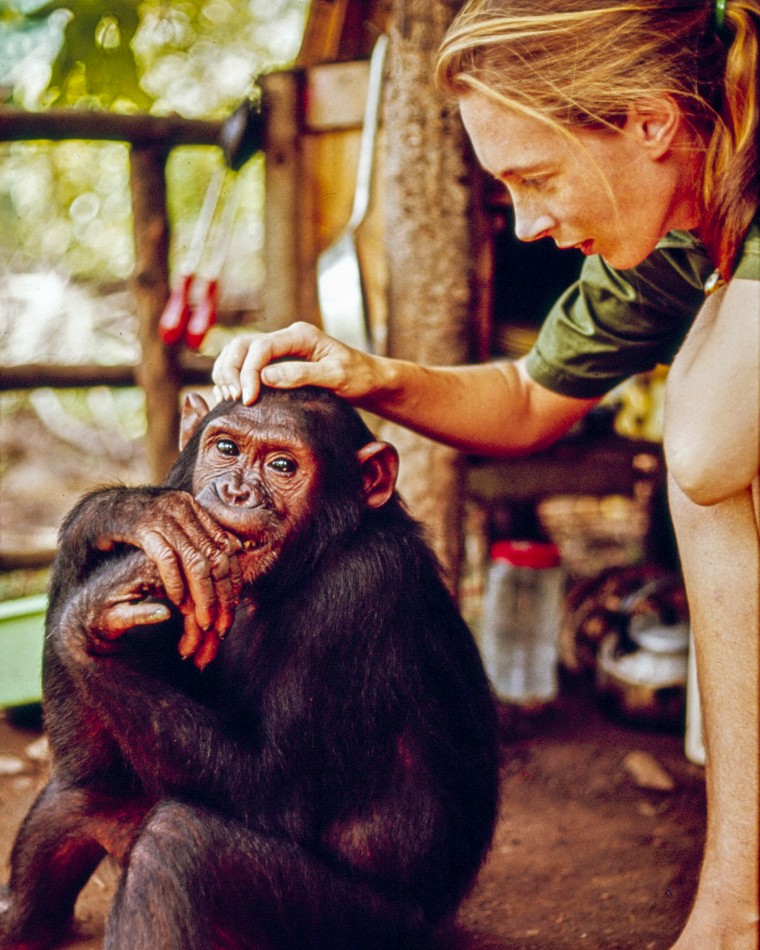Did you know that a young woman armed only with binoculars and a notebook revolutionized our understanding of chimpanzees, proving they use tools just like humans? Jane Goodall, the legendary primatologist, dedicated over six decades to studying these primates in their natural habitat. Her work not only reshaped science but also ignited global conservation movements.
Jane Goodall’s journey began in the forests of Tanzania, where she observed behaviors that blurred the lines between humans and animals. Through patience and empathy, she uncovered truths that challenged long-held beliefs. This article explores her life, achievements, and enduring impact.
Table of Contents
- Early Life
- Education and Path to Gombe
- Groundbreaking Discoveries in Chimpanzee Behavior
- Conservation Efforts and the Jane Goodall Institute
- Awards, Honors, and Global Recognition
- Personal Life and Influences
- Expert Opinions on Her Contributions
- Q&A: Common Questions About Jane Goodall
- Summary
- External Links

How Jane Goodall changed what we know about chimps | National Geographic
Early Life
Jane Goodall was born Valerie Jane Morris-Goodall on April 3, 1934, in Hampstead, London. Her father, Mortimer Herbert Morris-Goodall, was a businessman, while her mother, Margaret Myfanwe Joseph, was a novelist writing under the pseudonym Vanne Morris-Goodall. The family later relocated to Bournemouth, where young Jane attended Uplands School in nearby Poole.
From a tender age, Jane Goodall showed an affinity for animals. Her father gifted her a stuffed chimpanzee named Jubilee, which she cherished and credited with sparking her lifelong passion. As she recalled, “My mother’s friends were horrified by this toy, thinking it would frighten me and give me nightmares.” Instead, it fueled her dreams of working with wildlife.
Growing up during World War II, Jane Goodall faced hardships but found solace in nature. She spent hours observing birds and insects in her garden, dreaming of Africa after reading books like The Story of Doctor Dolittle and Tarzan. These early experiences taught her the value of patience and observation—skills that would define her career.
- Key Influences: Books on animals and Africa shaped her worldview.
- Family Support: Her mother encouraged her curiosity, unlike many who dismissed girls’ scientific ambitions.
- Childhood Anecdotes: Jane once hid in a henhouse for hours to watch a chicken lay an egg, demonstrating her innate scientific method.
This foundation instilled in Jane Goodall a deep respect for all living beings, setting the stage for her pioneering work.
Education and Path to Gombe
Jane Goodall’s formal education was unconventional for a scientist. She left school at 18 without pursuing higher education immediately, working as a secretary to fund her dreams. In 1957, at age 23, she traveled to Kenya, where she met paleontologist Louis Leakey. Impressed by her knowledge, Leakey hired her as an assistant.
Under Leakey’s guidance, Jane Goodall studied primate behavior in London with experts like Osman Hill and John Napier. In 1960, Leakey sent her to Gombe Stream National Park in Tanzania to observe chimpanzees—a bold choice, as she lacked a degree. Accompanied by her mother for safety, she began her fieldwork.
In 1962, Jane Goodall entered the University of Cambridge for a PhD in ethology, becoming one of few admitted without a bachelor’s. Her thesis, “Behaviour of Free-Living Chimpanzees,” completed in 1966 under Robert Hinde, detailed her initial Gombe findings. Later honors included a Doctor of Science from the Open University of Tanzania in 2006.
- Challenges Faced: As a woman in a male-dominated field, she broke barriers; by 2019, primatology was nearly gender-balanced, partly due to her influence.
- Mentorship Role: Leakey saw her lack of formal training as an asset, free from biases.
- Initial Setup: Living in a tent, she endured isolation, diseases, and skepticism from academics.
Jane Goodall’s path teaches that passion and perseverance can outweigh traditional credentials, inspiring aspiring scientists worldwide.

Jane Goodall Reflects On Her Younger Self, As Seen In Recently Discovered Footage | Here & Now
Groundbreaking Discoveries in Chimpanzee Behavior
Jane Goodall arrived at Gombe in July 1960, facing wary chimpanzees. After months, she gained their trust, notably through David Greybeard, who allowed her close observation. Her first major discovery: chimpanzees make and use tools, like stripping twigs to “fish” for termites. This challenged the notion that tool-making was uniquely human, prompting Leakey to declare, “We must now redefine man, redefine tool, or accept chimpanzees as human!”
Further observations revealed chimpanzees hunt cooperatively, eating smaller primates like colobus monkeys—up to one-third of Gombe’s colobus population annually. Jane Goodall documented complex social structures, including hierarchies, alliances, and emotions like joy and sorrow.
In the 1970s, she witnessed darker behaviors: the Gombe Chimpanzee War (1974–1978), where one group annihilated another, and cannibalism among females. As she noted, “During the first ten years… I had believed that the Gombe chimpanzees were… rather nicer than human beings. Then suddenly we found that chimpanzees could be brutal.”
- Tool Use Examples:
- Termite fishing with modified grass stalks.
- Using leaves as sponges for water.
- Stones as hammers to crack nuts.
- Social Insights: Long-term bonds lasting over 50 years, with behaviors like hugs and kisses.
- Impact on Science: Her naming of subjects (e.g., Flo, Fifi) humanized animals, now standard in ethology.
These discoveries taught us that chimpanzees share 98.7% of human DNA, bridging evolutionary gaps and fostering empathy for wildlife.
Conservation Efforts and the Jane Goodall Institute
By the 1980s, Jane Goodall shifted from research to activism after a 1986 conference revealed habitat loss and poaching threats. “I went to the conference as a scientist,” she said, “and I left as an activist.”
In 1977, she founded the Jane Goodall Institute (JGI) to sustain Gombe research and expand conservation. With 19 offices worldwide, JGI focuses on community-centered programs. The 1994 Lake Tanganyika Catchment Reforestation and Education (TACARE) combats deforestation while supporting local education and health.
In 1991, Jane Goodall launched Roots & Shoots, empowering youth in over 100 countries to tackle environmental issues. By 2010, it had over 10,000 groups. She also established sanctuaries like Tchimpounga (1992) for orphaned chimps.
- Key Programs:
- TACARE: Links conservation with microcredit and girls’ education.
- Roots & Shoots: Hands-on projects for animals, people, and the environment.
- Partnerships: With NASA for eco-friendly products in 2018–2020.
- Advocacy: Opposed animal testing, fox hunting, and promoted ethical farming.
Jane Goodall’s efforts teach that true conservation integrates human needs, proving one person can mobilize global change.

Jane Goodall in photos: Her legacy as a chimpanzee researcher and animal rights advocate
Awards, Honors, and Global Recognition
Jane Goodall’s contributions earned her numerous accolades. In 2002, she became a UN Messenger of Peace. She received the Hubbard Medal (1963), Tyler Prize (1997), and Dame Commander of the British Empire (2004).
In January 2025, just before her passing, President Joe Biden awarded her the Presidential Medal of Freedom, America’s highest civilian honor. Other honors include France’s Legion of Honour and Japan’s Kyoto Prize.
- Notable Awards:
- Benjamin Franklin Medal in Life Science (2003).
- Gandhi-King Award for Nonviolence (2001).
- Spanish Prince of Asturias Award (2003).
- Cultural Impact: Mattel released a Barbie doll in her likeness in 2022; a bronze statue in Manhattan in 2019.
- Academic Honors: Over 45 honorary degrees, including from Cambridge.
These recognitions highlight how Jane Goodall’s work transcended science, influencing policy and culture.

Congratulations to Dr. Jane Goodall for being awarded the Presidential Medal of Freedom, America’s highest honor. Dr. Goodall received her medal on January 4 in a ceremony at the White House. We
Personal Life and Influences
Jane Goodall married twice: first to photographer Hugo van Lawick (1964–1974), with whom she had son Hugo Eric Louis (“Grub”); second to Derek Bryceson (1975–1980), a Tanzanian parliamentarian who aided her work until his death.
A vegetarian since the 1970s, she advocated compassion for all beings. Her books, like In the Shadow of Man (1971) and The Book of Hope (2021), blend science with personal reflections.
- Daily Life: Traveled 300 days a year for advocacy, even into her 90s.
- Inspirations: Mother Vanne’s support; childhood tree-climbing for solace.
- Final Message: In her last video, she urged action: “Every single one of us makes a difference every day.”
Jane Goodall’s life teaches resilience, showing how personal passions drive global impact.
Expert Opinions on Her Contributions
Experts hail Jane Goodall as transformative. Anthropologist Alison Behie credits her for inspiring a career switch after a talk. Primatologist Mireya Mayor notes her naming of animals “proved that science could extend its boundaries without losing rigour.”
Craig Stanford, in The New Chimpanzee, says her Gombe work “forever changed the way we look at our closest living relatives.” Conservationist Dale Peterson emphasizes her holistic approach: “Conservation could not succeed without addressing human needs.”
PETA’s Ingrid Newkirk called her a “champion for hope,” while Joe Biden noted her mobilization of global movements. These opinions underscore Jane Goodall’s role in advancing primatology and conservation.
Jane Goodall at UNESCO for a “Speech for History” | UNESCO
Q&A: Common Questions About Jane Goodall
Q: What was Jane Goodall’s most famous discovery? A: Observing chimpanzees making tools, challenging human exceptionalism.
Q: How did she start her career? A: Through Louis Leakey, who sent her to Gombe despite no formal training.
Q: What is Roots & Shoots? A: A youth program she founded in 1991, now in over 75 countries, fostering conservation leaders.
Q: Did she face criticism? A: Yes, for anthropomorphizing animals, but her methods became standard.
Q: What was her view on climate change? A: She called deniers unrealistic, citing hurricanes, floods, and melting ice.
Q: How many books did she write? A: Over 30, including children’s books and memoirs like My Life with the Chimpanzees.
These Q&As provide quick insights into Jane Goodall’s multifaceted legacy.
Summary
Jane Goodall’s life, from a curious child in England to a global icon, redefined primatology and conservation. Her discoveries revealed chimpanzees’ intelligence and emotions, while her activism through JGI and Roots & Shoots saved habitats and inspired generations. Passing at 91 on October 1, 2025, she left a message of hope: “We have the choice to use the gift of our life to make the world a better place.” Her work teaches empathy, action, and the interconnectedness of all life.
External Links
- Official Website: Jane Goodall Institute
- Biography: Wikipedia – Jane Goodall
- Recent Tributes: Smithsonian Magazine
- Books: The Book of Hope

